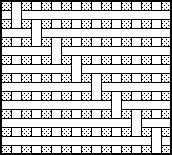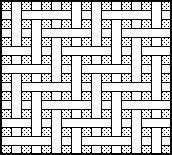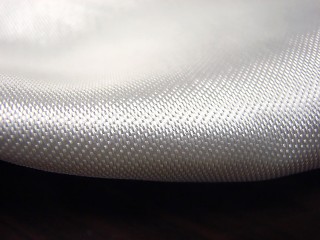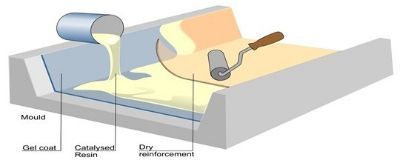MAX GPE RED A/B
OPAQUE RED
1 Gallon of Resin
1/2 Gallon of Curing Agent
192 Fl.Oz. Combined Volume
Typical Uses and Applications
Gel Coating For Molds And Tooling
Marine Coatings And Waterproofing
Fiberglassing/Impregnating Resin
Laminating Adheive
Electronic Potting Compounds
Hobby And Crafts Art Resin
DESCRIPTION
MAX GPE RED A/B is a two-component epoxy based resin system, pigmented to an opaque red color.
It is formulated to provide a broad range of mechanical and physical properties that are suitable for almost all types of epoxy resin applications.
MAX GPE RED A/B is mixed two parts Resin to one part Curing Agent by weight or by volume (2:1).
The mixed consistency is very low in viscosity, opaque RED and easily applied by roll coat, brush or pour applied into place resulting in bubble-free castings.
It is self-leveling and has a 60 minutes gel time that allows adequate working time for casting, coating, and potting or encapsulating applications.
MAX GPE RED A/B cured coating properties exhibit very high gloss, good color stability, high surface and excellent chemical resistance.
Optimized amounts UV inhibitors, antioxidants, and stabilizers are incorporated with the MAX GPE RED A/B to add outdoor durability.
An aliphatic polyurethane coating should be applied to further improved resistance to UV degradation.
THIS KIT INCLUDES A SET OF YORKER CAPS FOR CONTROLLED DISPENSING.
Use these Yorker caps to dispense the material with ease and minimize over pouring and reduce spills. We do not recommend using dispensing pumps. The curing agent or part B of any epoxy resin system is sensitive to moisture and carbon dioxide, which will react with the curing agent and form carbamate crystals (salt-like crystals that form on the tip of the pump) and reduce reactivity.
Carbamates are the white crystals that form on the curing agent when it is exposed to ambient carbon dioxide. These crystals are insoluble in epoxy resin resulting in contamination and causes poor cure and amine-blushing.
Use these Yorker caps and cut the tip to meter the orifice of the of the tip for accurate dispensing.
When done, just replace the tip cap and it will exclude ambient moisture and air and keep the resin system viable for years. Unless the kit is used continuously and within a short period of time, using dispensing pumps will cause more problems than ease-of-use.
The pump leaves the bottle open to moisture (from the pressure-relief hole) and the curing agent will degrade and cause other curing problems. o use the caps, cut off the tip to the desired hole size, and attach, do not cut past the ridgeline that keeps the tip cap in place.
To dispense, lay the plastic jug unto its side and apply pressure on the bottle to dispense the contents.
When done replace the tip cap and the container is sealed and it will be usable for years.
We highly recommend using a scale to measure each component accurately.
RESIN CRYSTALLIZATION FROM PROLONGED STORAGE OR COLD WEATHER EXPOSURE
The resin component or the PART A may crystallize due to cold temperature exposure.
Please inspect the resin component for any solidified crystals which will appear as waxy solid or cloudiness on the bottom of the PART A bottle.
View the following video for identification and processing.
DO NOT USE UNLESS PROCESSED TO REVERT ANY CRYSTALIZED RESIN BACK TO A LIQUID STATE AND AVOID POOR CURED RESULTS.
PROPER MIXING TECHNIQUE
Physical Properties
|
Viscosity |
900 cPs Mixed |
|
Mix Ratio |
2:1 by weight or volume |
|
Working Time |
65 Minutes at 200 Gram Mass |
|
Peak Exotherm |
160oC |
|
Time To Reach Peak |
80 Minutes @ 200 Gram Mass |
|
Density |
1.10 g/cc Cured |
|
Cure Time |
1 to 3 days at 25oC |
|
Heat Cure |
2 Hours @ 25oC Plus 1 Hour @ 120oC |
|
Set-To-Dry @ 10 Mil Film |
6 Hours |
|
Surface Dry |
9 Hours |
|
Handling Time |
8 Hours |
Mechanical Properties (1)
|
Test Criteria |
Room Temp Cure |
Room Temp + Heat Cure |
|
Hardness |
78 D |
81 D |
|
Izod Impact ft-lb/in |
.13 |
.19 |
|
Tensile Shear Strength psi |
3,100 |
3,765 |
|
Tensile Strength psi |
9,600 |
12,300 |
|
Tensile Modulus psi |
460,000 |
489,120 |
|
Ultimate Elongation % |
3.8 |
2.3 |
|
Heat Distortion Temperature |
84oC |
110oC |
|
Compressive Strength |
12,300 |
13,000 |
|
24 Hours Water Boil % Weight Gain |
2.2 |
1.8 |
Electrical Properties (1)
|
|
@ 23oC |
@ 40oC |
@ 60oC |
@ 100oC |
|
Dielectric Constant 100 Hz ASTM D-150 |
4.7 |
4.7 |
4.7 |
5.4 |
|
Dissipation Factor 100Hz |
3.4 x 10-3 |
3.1 x 10-3 |
3.5 x 10-3 |
6.9 x 10-3 |
|
Volume Resistivity Ohm-cm |
5.0 x 1015 |
3.4 x 1015 |
2.6 x 1014 |
2.4 x 1014 |
|
Dielectric Strength V/mil |
1/8 Inch Thick 558 |
|
|
|
BONDS TO POLYESTER OR EPOXY GEL COATS
The efficiency of the adhesion of any coating onto any substrate is highly dependent on the quality of its surface preparation. As with any color coating application, some understanding of painting and coating applications must be observed.
MAX GPE WHITE A/B 1.5 Gallon Kit | |
MAX GPE BLACK A/B 1.5 Gallon Kit | |
MAX GPE RED A/B 1.5 Gallon Kit | |
MAX GPE YELLOW A/B 1.5 Gallon Kit | |
MAX GPE BLUE A/B 1.5 Gallon Kit |
Use these theoretical factors to determine coverage of an unfilled epoxy resin as a theoretical guide.
Please note that this is a 1.5-gallon kit and these numbers are based on theoretical physical data.
It is also important to consider the type of substrate to be coated in regards to its surface roughness and porosity or absorbency,
TO DETERMINE COVERAGE ON A FLAT SMOOTH SURFACE,
DETERMINE THE LENGTH X WIDTH X THICKNESS IN INCHES
TO OBTAIN THE CUBIC VOLUME INCH OF THE MIXED RESIN NEEDED.
USE THE FOLLOWING EQUATION:
1 GALLON OF RESIN CAN COVERS 1608 SQUARE FEET
PER 1 MIL OR 0.001 INCH CURED COATING THICKNESS
(LENGTH X WIDTH X COATING THICKNESS)/ 231 CUBIC INCHES PER GALLON = CUBIC-INCHES OF COATING NEED
50 INCHES X 36 INCHES X 0.010 (10 MILS) = 18 CUBIC INCHES
18/231= .0779 GALLON OF MIXED RESIN
USE THESE FACTORS TO CONVERT GALLON NEEDED INTO VOLUMETRIC OR WEIGHT MEASUREMENTS
USE THE FOLLOWING FACTORS BY THE GALLON NEEDED:
FOR EXAMPLE:
231 X .0779 = 17.99 CUBIC INCHES
OR
4195 GRAMS X .0779 = 326.79 GRAMS
FLUID GALLON VOLUME CONVERSION |
1 GALLON = 231 CUBIC INCHES= 1 GALLON = 128 OUNCES 1 GALLON = 3.7854 LITERS 1 GALLON = 4 QUARTS 1 GALLON = 16 CUPS |
FLUID GALLON MASS CONVENTIONS |
1 GALLON OF MIXED UNFILLED EPOXY RESIN = 9.23 POUNDS 1 GALLON OF MIXED UNFILLED EPOXY RESIN = 4195 GRAMS |
COLOR MATCHING AND COLOR BLENDING
MAX COLOR PIGMENT PASTE CONCENTRATES
These are color concentrates only and must be dispersed an epoxy resin or PART A component.
Used these colors to tint or pigment all of our MAX EPOXY RESIN SYSTEMS.
Visit the page to view addition procedure
MAX COLOR KIT https://www.ebay.com/itm/
These line of pigmented epoxy were optimized for most coating, casting, and other polymers applications.
The use of an accurate scale is highly recommended for mix accuracy and color formula repeatability.
Purchase this scale with any of our product offering and the shipping cost of the scale is free.
https://www.ebay.com/itm/222630300203
To achieve the desired tint hue and color saturation, it is best to make a small trial batch first and use a scale to accurately weigh
the color concentrates as accurately as possible to achieve color reproduction when making a large batch.
All color modification is done to the PART A or resin component only.
MAX GPE RED Was Used As The Impregnating Resin To Fabricate The Fiberglass Laminate
REINFORCING FABRIC & IMPREGNATING RESIN
'ENGINEERED PROCESS'
EQUALS
COMPOSITE LAMINATE WITH THE BEST WEIGHT TO STRENGTH PERFORMANCE
Note The Uniformity Between The Impregnating Resin And Fiberglass Fabric Making A Transparent Laminate
TYPES OF FABRIC WEAVE STYLE AND SURFACE FINISHING
FOR RESIN TYPE COMPATIBILITY
Fabrics are generally considered ”balanced” if the breaking strength is within 15% warp to fill and are best in bias applications on lightweight structures.
“Unbalanced” fabrics are excellent when a greater load is required one direction and a lesser load in the perpendicular direction.
- Tow: The bundle of individual carbon filaments used to weave carbon fabric. 50k tow means there are 48-50,000 carbon filaments in the tow. Smaller tow i.e. 12k, 6k, 3k and 1k are obtained by dividing the 50k tow into smaller bundles.
- Thread Count: The number of threads (tow in carbon and yarn in Aramid) per inch. The first number will be the warp count and the second will be the fill count.
- Fill: The threads that run the width of the roll or bolt and perpendicular to the warp threads.
- Warp: The threads that run the length of the roll or bolt and perpendicular to the fill threads.
- Finish: The chemical treatment to fiberglass making it compatible with resin systems, therefore improving the bond between the fiber and the resin. Finishing fiberglass typically decreases the fiber strength by as much as 50%. Both Silane and Volan finishes are epoxy compatible. Historically, Volan has been considered a softer finish for a more pliable fabric, but recent advances have yielded some excellent soft Silane finishes.
- Thickness: Measured in fractions of an inch. The thicker the fabric the more resin required to fill the weave to obtain a surface-smooth finished part.
Weaves:
- Plain weave means the warp and fill threads cross alternately. This is the most common weave.
- 4 Harness (4 HS Satin or crowfoot) weave means the fill thread floats over three warp threads, then under one warp thread. This weave is more pliable than the plain weave, therefore conforms to complex curves more easily.
- 8 Harness (8 HS Satin) weave means the fill thread floats over seven warp threads, then under one warp thread. This weave is the most pliable of the standard fiberglass weaves.
- 2 x 2 Twill weave means the fill thread floats over two warp threads, then fewer than two warp threads. This weave is found most commonly in carbon fabrics and is more pliable than plain weave.
Most fabrics are stronger in the warp than the fill because higher tension is placed on the warp fiber keeping it straighter during the weaving process. Rare exceptions occur when a larger, therefore stronger thread is used in the fill direction than the warp direction.
All of our fiberglass fabrics is woven By HEXCEL COMPOSITES, a leading manufacturer of composite materials engineered for high-performance applications in marine, aerospace for commercial and military, automotive, sporting goods and other application-critical performance. These fabrics are 100% epoxy-compatible and will yield the best mechanical properties when properly fabricated.
AVAILABLE FIBERGLASS, CARBON FIBER, AND KEVLAR FABRICS
|
AVAILABLE FABRICS |
LENGTH |
CLICK THE LINK TO VIEW & ADD
TO CART |
|
1.5-Oz Fiberglass Plain Weave
Style 120 |
5 Yards |
|
|
1.5-Oz Fiberglass Plain Weave
Style 120 |
10 Yards |
|
|
7-Oz Fiberglass Plain Weave
Style 7532 |
5 Yards |
|
|
10-Oz Fiberglass Plain Weave
Style 7500 |
3 Yards |
|
|
10-Oz Fiberglass Plain Weave
Style 7500 |
5 Yards |
|
|
10-Oz Fiberglass Plain Weave
Style 7500 |
10 Yards |
|
|
9-Oz Fiberglass 8 Harness Satin
Weave Style 7781 |
2 Yards |
|
|
9-Oz Fiberglass 8 Harness Satin
Weave Style 7781 |
5 Yards |
|
|
9-Oz Fiberglass 8 Harness Satin
Weave Style 7781 |
10 Yards |
|
|
26-Oz Fiberglass 8 Harness Satin
Weave Style 1584 |
3 Yards |
|
|
5-Oz Kevlar 49 Fabric 8 Harness
Satin Style 351 |
3 Yards |
|
|
6-Oz Carbon Fiber 3K Plain Weave
With Tracers |
3 Yards |
MAX BOND LOW VISCOSITY A/B
Marine Grade
|
MAX BOND LOW VISCOSITY
32-Oz Kit |
|
|
MAX BOND LOW VISCOSITY
64-Oz Kit |
|
|
MAX BOND LOW VISCOSITY
1-Gallon Kit |
|
|
MAX BOND LOW VISCOSITY
2-Gallon kit |
|
|
MAX BOND LOW VISCOSITY
10-Gallon Kit |
MAX 1618 A/B
Crystal Clear, High Strength, Lowest Viscosity (Thin), Durability & Toughness, Excellent Wood Working Resin
|
MAX
1618 A/B 48-Ounce Kit |
|
|
MAX
1618 A/B 3/4-Gallon Kit |
|
|
MAX
1618 A/B 3/4-Gallon Kit |
|
|
MAX
1618 A/B 1.5-Gallon Kit |
MAX CLR A/B
Water Clear Transparency, Chemical Resistance, FDA Compliant For Food Contact, High Impact, Low Viscosity
MAX CLR A/B 24-Ounce Kit | |
MAX CLR A/B 48-Ounce Kit | |
MAX CLR A/B 96-Ounce Kit | |
MAX CLR A/B 96-Ounce Kit | |
MAX CLR A/B 1.5-Gallon Kit |
MAX GRE A/B
GASOLINE RESISTANT EPOXY RESIN
Resistant To Gasoline/E85 Blend, Acids & Bases, Sealing, Coating, Impregnating Resin
MAX GRE A/B 48-Ounce Kit | |
MAX GRE A/B 96-Ounce Kit |
MAX HTE A/B
HIGH-TEMPERATURE EPOXY
Heat Cured Resin System For Temperature Resistant Bonding, Electronic Potting, Coating, Bonding
MAX HTE A/B 80-Ounce Kit | |
MAX HTE A/B 40-Ounce Kit |
Step Three:
Proper Lay-Up Technique -Putting It All Together
Pre-lay-up notes
- Lay out the fabric and pre-cut to size and set aside
- Avoid distorting the weave pattern as much as possible
- For fiberglass molding, ensure the mold is clean and adequate mold release is used
- View our video presentation above "MAX EPOXY RESIN MIXING TECHNIQUE"
- Mix the resin only when all needed materials and implements needed are ready and within reach
Mix the proper amount of resin needed and be accurate proportioning the resin and curing agent. Adding more curing agent than the recommended mix ratio will not promote a faster cure. Over saturation or starving the fiberglass or any composite fabric will yield poor mechanical performance. When mechanical load or pressure is applied to the composite laminate, the physical strength of the fabric should bear the stress and not the resin. If the laminate is over saturated with the resin it will most likely to fracture or shatter instead of rebounding and resist damage.
Don’t how much resin to use to go with the fiberglass?
A good rule of thumb is to maintain a minimum of 30 to 35% resin content by weight.
This is the optimum ratio used in high-performance prepreg (or pre-impregnated fabrics) typically used in aerospace and high-performance structural application.
For general hand lay-ups, calculate using 60% fabric weight to 40% resin weight as a safety factor.
This will ensure that the fabricated laminate will be below 40% resin content depending on the waste factor accrued during fabrication.
Place the entire pre-cut fiberglass to be used on a digital scale to determine the fabric to resin weight ratio. Measuring by weight will ensure accurate composite fabrication and repeatability, rather than using OSY (ounces per square yard) or GSM ( grams per meter square) data.
THE USE OF A WEIGHING SCALE IS HIGHLY RECOMMENDED 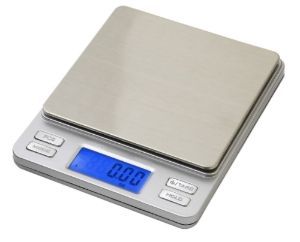
Purchase this scale with any of our product offering and the shipping cost of the scale is free.
https://www.ebay.com/itm/222630300203
A good rule of thumb is to maintain a minimum of 30 to 35% resin content by weight.
this is the optimum ratio used in high-performance prepreg typically used in aerospace and high-performance structural application.
For general hand lay-ups, calculate using 60% fabric weight to 40% resin weight as a safety factor.
This will ensure that the fabricated laminate will be below 40% resin content depending on the waste factor accrued during fabrication.
Place the entire pre-cut fiberglass to be used on a digital scale to determine the fabric to resin weight ratio. Measuring by weight will ensure accurate composite fabrication and repeatability, rather than using OSY data.
Typical fabric weight regardless of weave pattern
1 ounce per square yard is equal to 28.35 grams
1 square yard equals to 1296 square inches (36 inches x 36 inches)
FOR EXAMPLE
1 yard of 8-ounces per square yard (OSY) fabric weighs 226 grams
1 yard of 10-ounces per square yard (OSY) fabric weighs 283 grams
Ounces per square yard or OSY is also known as aerial weight, which is the most common unit of measurement for composite fabrics.
To determine how much resin is needed to adequately impregnate the fiberglass, use the following equation:
(Total Weight of Fabric divided by 60%)X( 40%)= weight of mixed resin needed
OR
fw= fabric weight
rc= target resin content
rn=resin needed
MASTER EQUATION
(fw/60%)x(40%)=rn
FOR EXAMPLE
1 SQUARE YARD OF 8-OSY FIBERGLASS FABRIC WEIGHS 226 GRAMS
(226 grams of dry fiberglass / 60%) X 40% = 150.66 grams of resin needed
So for every square yard of 8-ounce fabric, it will need 150.66 grams of mixed resin.
Computing For Resin And Curing Agent Amount
150.66 grams of resin needed
MIX RATIO OF RESIN SYSTEM IS 2:1 OR
50 PHR (per hundred resin)
2 = 66.67% (2/3)
+
1 = 33.33%(1/3)
=
(2+1)=3 or (66.67%+33.33%)=100% or (2/3+1/3)= 3/3
150.66 x 66.67%= 100.45 grams of Part A RESIN
150.66 x 33.33%= 50.21 grams of Part B CURING AGENT
100.45 + 50.21 = 150.66 A/B MIXTURE
GENERAL LAY-UP PROCEDURE
Apply the mixed resin onto the surface and then lay the fabric and allow the resin to saturate through the fabric.
NOT THE OTHER WAY AROUND
This is one of the most common processing error that yields sub-standard laminates.
By laying the fiberglass onto a layer of the prepared resin, less air bubbles are entrapped during the wetting-out stage.
Air is pushed up and outwards instead of forcing the resin through the fabric which will entrap air bubbles.
This technique will displace air pockets unhindered and uniformly disperse the impregnating resin throughout the fiberglass.
Eliminating air entrapment or void porosity in an epoxy/fiberglass lay-up process


Vacuum Infusion Process is also known in the composites industry as
Vacuum Assisted Resin Transfer Molding or VARTM.
Similar to the Vacuum Bagging Process where the negative pressure is used to apply consolidation force to the laminate while the resin cures, the resin is infused into the fabric lay-up by sucking the impregnating resin and thus forming the composite laminate.
The VARTM Process produces parts that require less secondary steps, such as trimming, polishing or grinding with excellent mechanical properties. However, the vacuum infusion requires more additional or supplemental related equipment and expendable materials. So the pros and cons of each presented composite fabrication process should be carefully determined to suit the user's capabilities and needs.
Please view the following video demonstration which explains the process of Vacuum Infusion or VARTM process.
MAX 1618 A/B VACUUM ASSISTED RESIN TRANSFER MOLDING PROCESS
Step Four: Proper Curing Although we have formulated all of our MAX EPOXY RESIN SYSTEM product line to be resistant to amine-blush, it is recommended not to mix any resin systems in high humidity conditions, greater than 60%. Always make sure that the substrate or material the epoxy resin system is being applied to is well prepared as possible to ensure the best-cured performance.
Always review the published data and information for proper usage, application, and general safety information.
Our expert staff of engineers is always available for consultation and assistance.
Allow the lay-up to cure for a minimum of 24 to 36 hours before handling. Optimum cured properties can take up to 7 days depending on the ambient cure condition. The ideal temperature cure condition of most room temperature epoxy resin is 22 to 27 degrees Celsius at 20% relative humidity. Higher ambient curing temperatures will promote faster polymerization and development of cured mechanical properties.
IMPROVING MECHANICAL PERFORMANCE VIA POST HEAT CURE A short heat post cure will further improve the mechanical performance of most epoxy resins. Allow the applied resin system to cure at room temperature until for 18 to 24 hours and if possible, expose heat cure it in an oven or other sources of radiant heat (220°F to 250°F) for 45 minute to an hour. You can also expose it to direct sunlight but place a dark colored cover, such as a tarp or cardboard to protect it from ultraviolet exposure.
In general, room temperature cured epoxy resin has a maximum operating temperature of 160°F or lower. A short heat post cure will ensure that the mixed epoxy system is fully cured, especially for room temperature cure system that can take up to 7 days to achieve 100% cure. Some darkening or yellowing of the epoxy resin may occur if overexposed to high temperature (>250 F).
AMINE BLUSH The affinity of an amine compound (curing agent) to moisture and carbon dioxide creates a carbonate compound and forms what is called amine blush. Amine blush is a wax-like layer that forms as most epoxies cure. If the epoxy system is cured in extreme humidity (>70%). It will be seen as a white and waxy layer that must be removed by physical sanding of the surface followed by an acetone wipe.
OTHER TYPES OF EPOXY RESIN CURE MECHANISM
LATENT CURING SYSTEMS Latent epoxy resins are systems that are mixed together at room temperature and will begin polymerization but it will not achieve full cure unless it is exposed to a heat cure cycle. In general, these are high-performance systems that demonstrate exceptional performance under extreme conditions such as high mechanical performance under heat and cryogenic temperatures, chemical resistance or any environment that epoxy room temperature system perform marginally or poorly. Upon the mixing of the resin and curing agent polymerization will begin and will only achieve a partial cure. Some resins may appear cured or dry to the touch, this state is called 'B-Stage Cure', but upon application of force will either be gummy or brittle almost glass-like and will dissolve in most solvents. The semi-cured resin must be exposed to an elevated temperature for it to continue polymerization and achieve full cure.
HEAT ACTIVATED CURING SYSTEMS This type of epoxy system will not polymerize unless it is exposed to the activation temperature of the curing agent which can be as low as 200°F and as high as 400°F.
TESTING THE COMPOSITE
Determination Of The Fabric To Resin Ratio ULTIMATE COMPRESSIVE STRENGTH
6500 pounds to failure / 0.498 square inch =
13,052 psi Maximum Compressive Strength
****************************************************************
PLEASE CHECK OUT OTHER AVAILABLE
RESIN SYSTEMS AT OUR eBay STORE For our complete listing, please Visit our eBay store!
IMPORTANT NOTICE
Your purchase constitutes the acceptance of this disclaimer.The user should thoroughly test any proposed use of this product and independently conclude the satisfactory performance in the application.
Likewise, if the manner in which this product is used requires government approval or clearance, the user must obtain said approval. The information contained herein is based on data believed to be accurate at the time of publication.
Data and parameters cited have been obtained through published trade information, Polymer Composites, Inc, and independent laboratories using industry test methods and materials under controlled conditions.
Data of this type should not be used for a specification for fabrication and design. It is the user's responsibility to determine the product's fitness for use and performance suitability.
There is no warranty of merchantability for fitness of use, nor any other express implied warranty.
The user's exclusive remedy and the manufacturer's liability are limited to refund of the purchase price or replacement of the product within the agreed warranty period.
Polymer Composites Inc and its direct representative will not be liable for incidental or consequential damages of any kind.
Determination of the suitability of any kind of information or product for the use contemplated by the user, the manner of that use, and whether there is any infringement of patents is the sole liability of the user.
Always review the published data and information for proper usage, application, and general safety information.
Our expert staff of engineers is always available for consultation and assistance.
ULTIMATE COMPRESSIVE STRENGTH
6500 pounds to failure / 0.498 square inch =
13,052 psi Maximum Compressive Strength
****************************************************************
PLEASE CHECK OUT OTHER AVAILABLE
IMPORTANT NOTICE
Your purchase constitutes the acceptance of this disclaimer.
The user should thoroughly test any proposed use of this product and independently conclude the satisfactory performance in the application.
Likewise, if the manner in which this product is used requires government approval or clearance, the user must obtain said approval. The information contained herein is based on data believed to be accurate at the time of publication.
Data and parameters cited have been obtained through published trade information, Polymer Composites, Inc, and independent laboratories using industry test methods and materials under controlled conditions.
Data of this type should not be used for a specification for fabrication and design. It is the user's responsibility to determine the product's fitness for use and performance suitability.
There is no warranty of merchantability for fitness of use, nor any other express implied warranty.
The user's exclusive remedy and the manufacturer's liability are limited to refund of the purchase price or replacement of the product within the agreed warranty period.
Polymer Composites Inc and its direct representative will not be liable for incidental or consequential damages of any kind.
Determination of the suitability of any kind of information or product for the use contemplated by the user, the manner of that use, and whether there is any infringement of patents is the sole liability of the user.




















